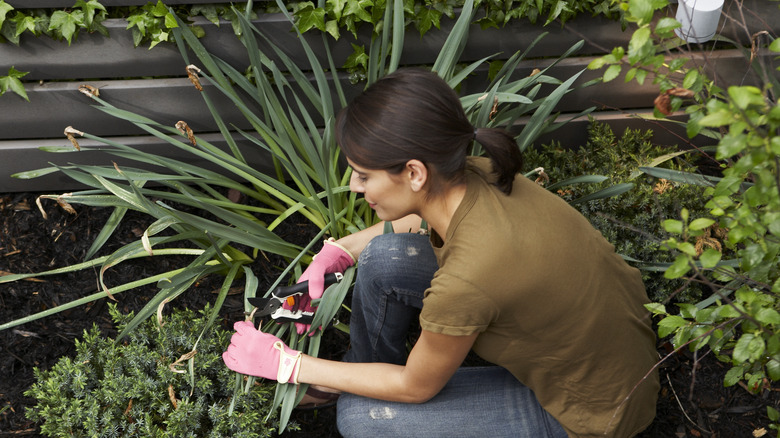Here's What The 'Chelsea Chop' Pruning Method Is (& Which Flowers It's Great For)
If you've heard the phrase "Chelsea Chop," you may be more than a little confused — who is Chelsea, and what is she chopping? But Chelsea doesn't actually refer to a person. Instead, it refers to the Royal Horticultural Society's annual flower show, held in Chelsea, London. The RHS Chelsea Flower Show is a beloved institution, both for those who experience it in person and those who admire its gardens from afar via videos and pictures. It's held each year in late May, which, coincidentally, is also the perfect time to cut back many kinds of perennials, at least in the United Kingdom. Thus, the chop that many perennial plants receive in late May or early June is referred to as the Chelsea Chop.
Cutting back perennials in late spring provides several advantages, including helping your plants grow sturdier and preventing them from getting too large. It can also result in plants with more but smaller flowers and a slightly later bloom time. While you certainly don't want to try this strategy with everything in your garden (especially not single-stem sunflowers, peonies, or other flowers that have just one bloom), it can be ideal for sedum, echinacea, asters, and many other branching perennial plants.
How and when to perform the Chelsea Chop
Gardeners in the U.K. traditionally cut back their perennials right around the time of the Chelsea Flower Show in late May, but the best time for your plants may differ slightly depending on your climate and weather. Unlike the cleanup you may do on your perennials in early spring to remove dead branches and flowers from the previous year, the Chelsea Chop is all about cutting new growth and is more similar to pinching annuals, as the goal is to remove some of the new growth from the top of the plant to encourage it to branch outwards.
While it is up to you how much growth you want to remove, it is common to cut plants back by as much as 50%. You certainly aren't required to be this aggressive, but if your plant is already looking leggy or in need of staking early in the season, then a significant prune may be worth it. While the Chelsea Chop does delay when your plant blooms, it can be by as little as a few days for many types of flowers, including asters.
Some of the best flowers for the Chelsea Chop
In addition to asters, which benefit from both the removal of height and gentle shaping of the sides to create a more mounded plant, sedum and echinacea are also great candidates for the Chelsea Chop. Because tall sedum varieties like Autumn Joy can be prone to leaning, some judicious cuts early in the growing season can go a long way to creating a sturdier and more attractive plant that blooms just a bit later. If you have multiple plants of the same species, you may want to try chopping back just one, spreading out the blooms and providing you with an even longer period of flowers.
While the Chelsea Chop is associated with late May and early June pruning, a similar strategy can be used in August in areas with long growing seasons. By cutting back plants like roses and salvias later in the summer, you can persuade these plants to bloom again if there is enough time left in the growing season. You can also get endless blooms all summer long by pruning just parts of your salvia and similar perennials, allowing one section of the plant to flower at a time. Just remember that pruning your garden in summer heat can unnecessarily stress plants (and you!), so try to prune on cooler days or early in the morning before it becomes too hot.


